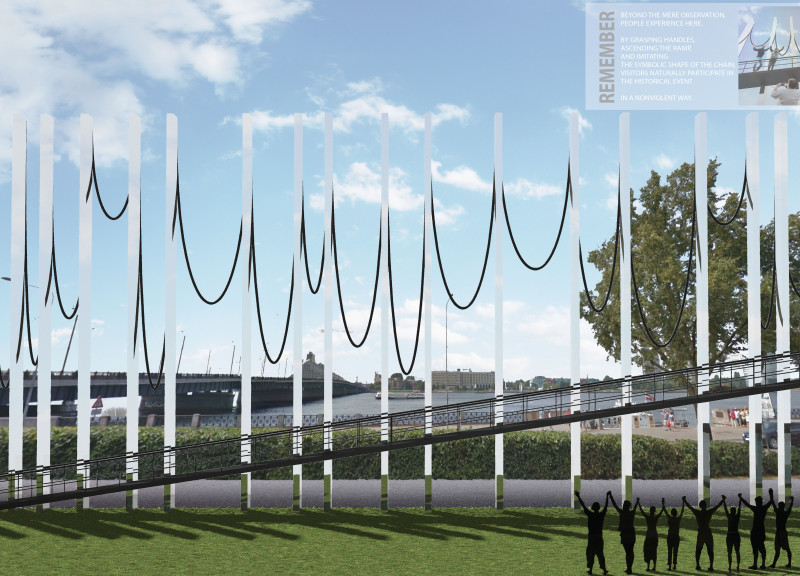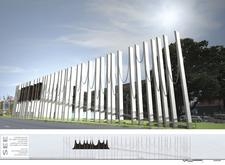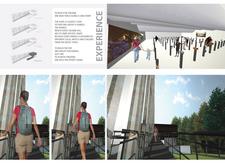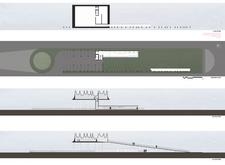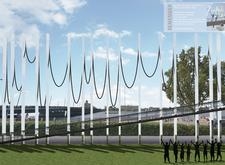5 key facts about this project
### Overview
Located in a historically significant area, the project titled "See" is designed to explore themes of freedom and connection through its architectural narrative. The design concept emphasizes historical commemoration and aims to engage users on both an emotional and physical level. Its structure responds to the complex stories of conflict and liberation while inviting active participation from visitors.
### Spatial Strategy and User Interaction
The layout consists of distinct functional zones, including a welcoming ground plane with green spaces and access areas leading to elevated exhibition spaces. These areas are designed to be modular, allowing for flexibility in accommodating various events and conveying a cohesive narrative. A prominent experiential ramp facilitates movement throughout the site, guiding visitors on a symbolic ascent that underscores the themes of growth and understanding related to historical narratives.
The architecture incorporates elements such as vertical columns and curvilinear cables, which generate a dynamic rhythm on the façade. This rhythmic design not only enhances aesthetic appeal but also encourages exploration, prompting users to engage with the space actively. Interactive features, such as handles on the ramp, embody the project’s themes, enabling visitors to physically connect with the overarching symbolism of chains and freedom.
### Materiality and Structural Integrity
The material selection is integral to the project’s visual and tactile quality. Concrete forms the structural basis, providing strength and durability. Steel reinforcements enhance the stability of the design while promoting a dialogue between structural and organic forms. Glass elements are strategically placed to evoke transparency and openness, complementing the project’s intent. High-performance coatings are implied in the finishes, extending the longevity and visual impact of the exterior surfaces exposed to environmental factors.
In summary, the project reflects a careful consideration of spatial organization, user experience, and material choices, fostering an environment conducive to reflection and engagement with its historical themes.


